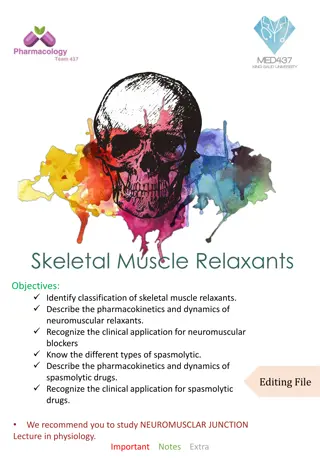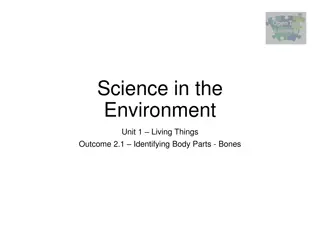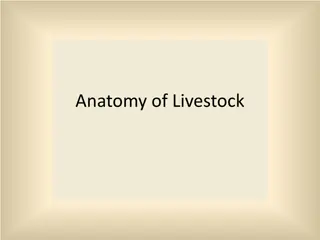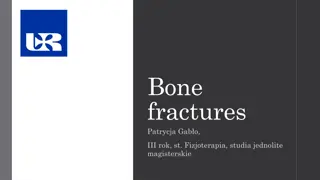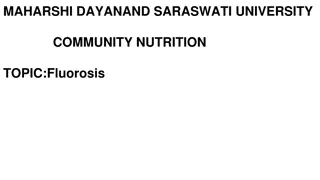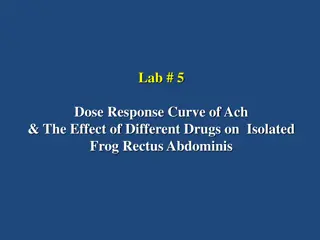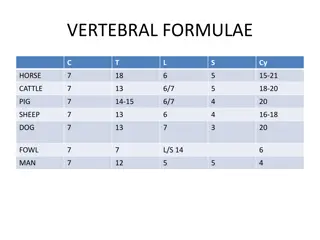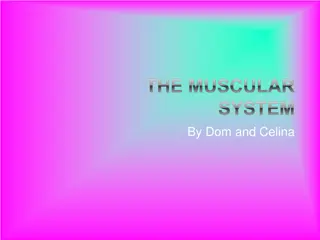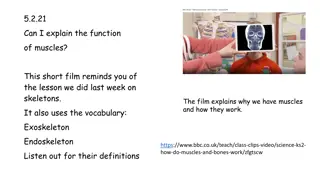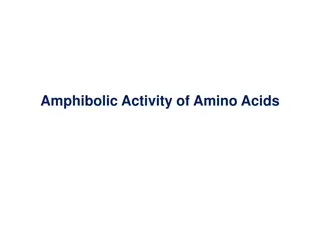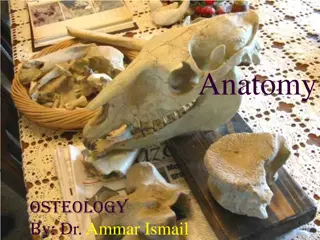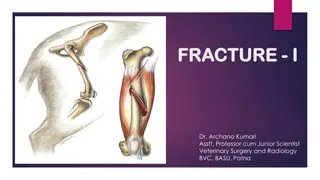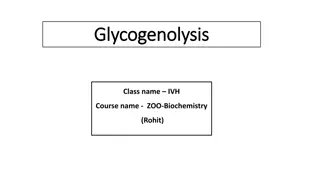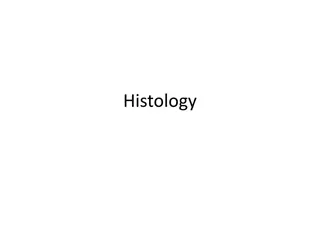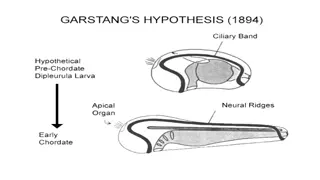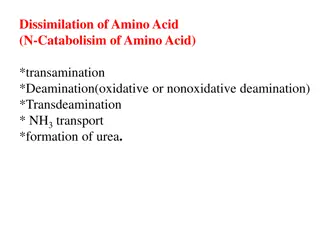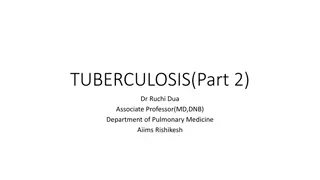Understanding the Human Skeletal System
Explore the functions of the skeletal system, learn about the various types and main bones, understand the importance of bone health, and discover the divisions of the skeleton - axial and appendicular. Dive into the intricacies of bone structure, functions, and how bones support, protect, and enable movement in the human body.
Download Presentation

Please find below an Image/Link to download the presentation.
The content on the website is provided AS IS for your information and personal use only. It may not be sold, licensed, or shared on other websites without obtaining consent from the author. Download presentation by click this link. If you encounter any issues during the download, it is possible that the publisher has removed the file from their server.
E N D
Presentation Transcript
Unit Objectives Identify the functions of the skeletal system. Label main bones in the human body. Name and identify the different types of bones. Understand the division of the skeleton and the corresponding groups of bones. Take a deeper look into various bone topics including joints, broken bones, types of bone, and key terms associated with bones. Understand the importance of bone health.
What are the functions of the skeleton system? 1. Support- bones form the body s supporting framework. 2. Protect- bones provide protection for delicate structures, including vital organs in the body. 3. Movement- muscles are anchored firmly to bones and as muscles contract and shorten they pull on bones and thereby move them. 4. Storage- minerals and fat are stored in bone (mainly calcium and phosphate) 5. Blood cell formation- red bone marrow (soft connective tissue inside the hard walls of some bones) produces blood cells; a process called hemopoiesis
What is the skeleton and What is the skeleton and what is its purpose? what is its purpose? The human skeleton is an internal framework that, in adults, consists of 206 bones. In addition to bones, the skeleton also consists of cartilage and ligaments: Cartilage is a type of dense connective tissue, made of tough protein fibers, that provides a smooth surface for the movement of bones at joints. Ligaments are bands of fibrous connective tissue that holds bones together and keeps them in place.
Types of Bones: Types of Bones: 1. Long 2. Short 3. Flat 4. Irregular 5. Sesamoid Bone
The Main Bones in the Skeletal System
Divisions of the Skeleton THE AXIAL SKELETON THE APPENDICULAR SKELETON Consists of 126 bones including: Shoulder girdle: 4 bones Arms and forearms: 6 bones Wrists and hands: 54 bones Pelvic Girdle: 2 bones Thighs and legs: 8 bones Ankles and feet: 52 Consists of the following 80 bones: Skull: 22 bones Hyoid: 1 bone Vertebral Column: 32 bones Rib Cage: 24 bones Sternum: 1 bone
Webquest time You are going to be provided with a worksheet to complete. Should we make it a race?
Diseases/ Conditions that affect the Skeletal System Each student was given a disease or condition to research. Fill in the sheet and provided. We will discuss





